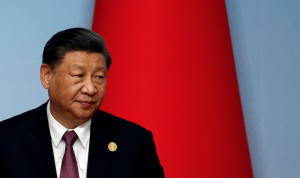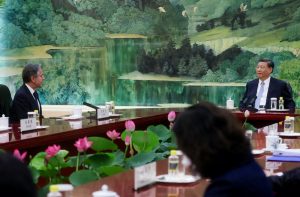China suspended publication of its youth unemployment data on Tuesday, saying it needed to review the methodology behind the closely watched benchmark, which has hit record highs in one of many warning signs for the world’s second-largest economy.
The decision announced shortly after the release of weaker-than-expected factory and retail sales data sparked rare backlash on social media amid growing frustration about employment prospects in the country.
“If you close your eyes then it doesn’t exist,” one user wrote on microblogging site Weibo, where a hashtag related to the decision by the National Bureau of Statistics received over 10 million views.
Also on AF: China’s Shock Rate Cuts Ring Alarm Bells After Weak July Data
“There is a saying called ‘burying your head in the sand’,” wrote another user.
This is the latest move by Chinese authorities to restrict access to key data and information, a trend that is unnerving overseas investors.
In recent months, China has restricted foreign users’ access to some corporate registries and academic journals, and cracked down on due diligence firms operating in the country, a vital source of information on China for overseas businesses.
“The declining availability of macro data may further weaken global investors’ confidence in China,” said Ting Lu, chief China economist at Nomura, adding that youth unemployment was expected to have risen in July.
Changing data collection method
Fu Linghui, a spokesman for the NBS, said the release of data would be suspended while authorities look to “optimise” collection methods.
“In recent years, the number of university students has continued to expand,” Fu said. “The main responsibility of current students is studying. Society has different views on whether students looking for jobs before graduation should be included in labour force surveys and statistics.”
This issue, as well as the definition of the age range currently set at 16-24, “needs further research,” Fu said.
At the height of its Covid-19 outbreak late last year, China abruptly changed the way it classified deaths from the disease, a move that fuelled criticism abroad and at home.
Tuesday’s move has also been met with scepticism at home as young Chinese face their toughest summer job-hunting season.
The most recent NBS data on youth unemployment, published last month, showed the jobless rate jumping to a record high of 21.3% in June.
Returning home, ‘lying flat’
Some 47% of graduates returned home within six months of graduation in 2022, up from 43% in 2018, state-run China News Service reported last week, citing a private sector survey.
The issue reared because Zhang Dandan, an associate professor of economics at Peking University’s National School of Development, used a different method for calculating the number of youth jobless – by including young Chinese “not in employment, education or training” (NEET) and also not actively looking for work.
Adding these 16 million youngsters meant the total would be 46.5% of young people aged 16 to 24 years of age, Zhang said in an opinion report published by Caixin last month, which referred to these young people as “full-time children”.
These youths “lie flat” by dropping out of the career rat race, with some taking up the role of a full-time homemaker, taking care of elderly family members or doing chores in exchange for food, shelter and sometimes “salaries” from their parents, a report by Nikkei said on Tuesday.
It said some were forced to take up the role because of ailing parents, while social media posts suggested others were happy to do this.
- Reuters, with additional editing and reporting by Vishakha Saxena and Jim Pollard
NOTE: Further details (the last four pars) were added to this report on August 15, 2023.
Also read:
Weak Demand Pushes China Into Possible Year-Long Deflation
China’s $13tn Provincial Debt Crisis Threatens to Spill Over
Biden Likens China to ‘Ticking Time Bomb’ Due to Economic Woes
China Parents Paying Jobless Offspring to be Children – Fortune
China’s Graduates Face Worst Job Crisis in Generations – SCMP
























